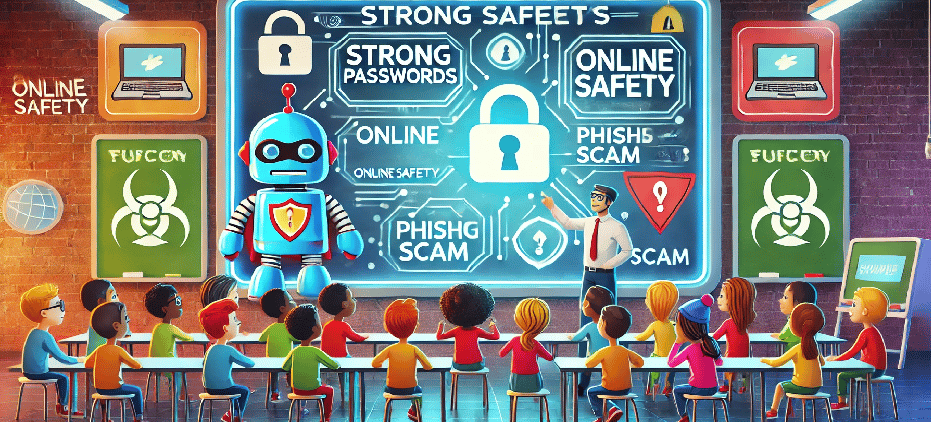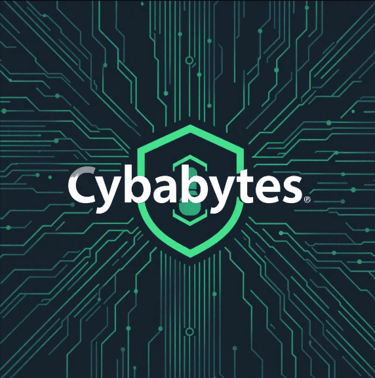How to Teach Kids About Cybersecurity
A Parent’s Guide to Raising Digital Natives


In today’s digital age, teaching kids about cybersecurity is just as important as teaching them how to ride a bike 🚲 or cross the street safely 🚦. The internet is an amazing resource for learning and entertainment, but it also comes with risks that children might not recognize. As parents, caregivers, and educators, we have the responsibility to equip our kids with the knowledge and tools to navigate the online world safely.
💡 Why Cybersecurity Education Matters for Kids
Think about how much of our lives are online—school assignments 📚, social interactions 💬, gaming 🎮, and even banking 💰. Kids are digital natives, growing up in a world where technology is integrated into nearly everything they do. However, they are also more vulnerable to cyber threats like identity theft, online scams, and cyberbullying.
Teaching kids about cybersecurity helps them:
🔑 Develop good online habits early.
🕵️ Recognize and avoid potential cyber threats.
🔒 Understand the importance of privacy.
🌐 Build a foundation for safe and responsible digital citizenship.
1️⃣ Start with the Basics: The Internet is Like a Public Place
One of the simplest ways to explain online safety to kids is to compare the internet to a public park 🌳. Just like you wouldn’t talk to strangers or give out personal information to random people in a park, the same rules apply online.
📖 Anecdote: I remember when my nephew, Jake, excitedly told me he made a new friend online in a gaming chat. When I asked how he knew this person was really a kid, he hesitated. That’s when I helped him understand that people online might not always be who they say they are. Now, he checks with a trusted adult before chatting with strangers.
Teach them:
❌ Never share personal information (full name, address, school name, phone number) with strangers online.
🚫 Avoid talking to people they don’t know in real life.
📝 Think before they post—once something is online, it’s difficult to erase.
2️⃣ Strong Passwords: Your First Line of Defense
Kids love superheroes 🦸, so frame passwords as their secret identity protection. Explain that just like superheroes keep their real identity hidden, they must create strong, unique passwords to protect their online accounts.
📖 Anecdote: My daughter once made her password "ilovecats" 🐱 because, well, she loves cats. When I showed her how easy it was to guess, she was shocked! We worked together to create a more complex password, and now she enjoys coming up with creative combinations that are still easy for her to remember but hard for others to guess.
🔑 Use a mix of uppercase and lowercase letters, numbers, and symbols.
❌ Avoid easy-to-guess passwords like “password123” or their own name.
✅ Encourage the use of a password manager (or a secure notebook for younger kids).
3️⃣ Beware of Online Strangers and Scams
Not everyone online is who they say they are 🤖. Teach kids how to spot potential scams and online predators.
📧 Explain phishing scams: Show them examples of fake emails or messages that try to steal information.
🎁 If an offer seems too good to be true, it probably is.
🛑 Encourage them to verify with an adult before clicking on unknown links or downloading files.
4️⃣ Cyberbullying: Be Kind and Stay Safe
Online interactions can sometimes turn negative. Teach kids about cyberbullying and the importance of being kind online. 🤗
📖 Anecdote: My friend’s son, Ethan, was excited about his first social media account 📱, but soon he received mean comments on a post. He didn’t know how to handle it and kept it to himself. When his mom finally found out, they discussed how blocking, reporting, and talking about it with a trusted adult could help. Now, Ethan knows he doesn’t have to face cyberbullying alone.
🚨 If someone is mean or threatening, don’t engage—block, report, and tell a trusted adult.
💬 Treat others online as they would in person.
🗣️ Encourage open conversations so they feel comfortable reporting issues.
5️⃣ Safe Gaming and Social Media Practices
Kids love online games 🎮 and social media 📱, but these platforms can expose them to risks.
🔐 Use privacy settings to limit who can see their profile and posts.
🏠 Avoid sharing real-life details in gaming chats.
🧐 Remind them that not everyone online is a true friend.
6️⃣ Leading by Example
The best way to teach cybersecurity is by practicing it yourself. If your kids see you using strong passwords 🔑, avoiding suspicious links 🚫, and maintaining good digital hygiene 🧹, they are more likely to do the same. Keep an open dialogue, stay involved in their online activities, and encourage questions.
✨ Final Thoughts
Cybersecurity education isn’t about scaring kids 😱 but empowering them 💪. By teaching them early and reinforcing good habits, you’re helping them develop into responsible, tech-savvy individuals. The internet can be a wonderful place 🌍 when used safely, and with the right guidance, kids can enjoy its benefits while staying protected.
Let’s raise a generation of digital citizens who are not just tech-savvy but also cyber-smart! 🧠💻
